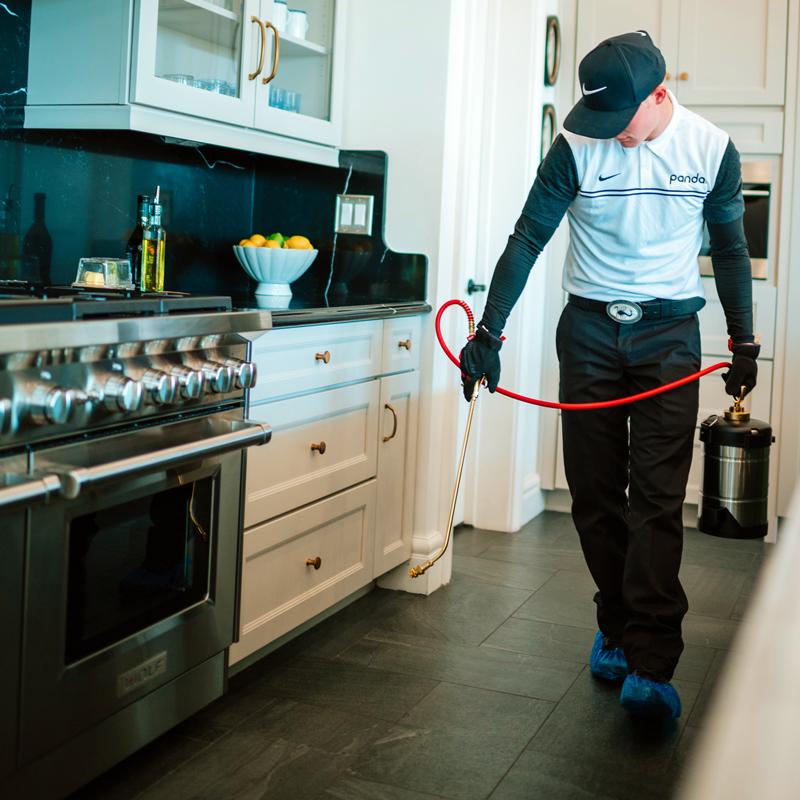You’re relaxing at home when suddenly you spot something crawling that doesn’t belong there. That moment of surprise can quickly turn to concern. What is it? Is it dangerous? What should you do now?
Below, we’ll discuss tips on how to deal with unusual pests and teach you how to prevent pests, whether common or not, from causing trouble at home.
3First Steps: Stay Calm and Identify
When you spot an unknown pest, your first action matters most. Take a deep breath and follow these steps:
- Don’t panic or squish it immediately – Some pests release strong odors when crushed (like odorous house ants), while others might sting when threatened (like scorpions).
- Try to identify it safely – Take a photo from a safe distance. This helps with identification later and shows professionals exactly what you’re dealing with.
- Note where you found it – Different pests prefer specific environments. Finding a silverfish near books or in a bathroom gives clues about what attracted it.
- Check if there are more – One ant often means many more nearby. Look for trails, nests, or signs of activity like droppings or damaged materials.
Common Unusual Pests You Might Encounter
Silverfish
These small, silver-scaled insects move quickly and hide in dark areas. You’ll recognize them by their fish-like movement and carrot-shaped bodies. They aren’t harmful to humans but can damage paper products, clothing, and other materials.
Earwigs
Despite old stories about crawling into ears, earwigs don’t actually do this. They have distinctive pincers on their rear and prefer moist environments. Earwigs won’t harm you but might damage garden plants and vegetation.
Scorpions
Finding a scorpion indoors can be alarming. Arizona bark scorpions, stripetail scorpions, giant hairy scorpions, and yellow ground scorpions are common in some regions. Remember, scorpion stings can cause pain and, in rare cases, more serious reactions.
Crazy Ants
Named for their erratic movement patterns, these dark brown or black ants move rapidly and unpredictably.
Safety Considerations
When dealing with unknown pests, your safety comes first. It should go without saying but do not touch them, even if you feel like they aren’t harmful. Keep children and pets away from them either and avoid home remedies. If you get bitten or have an allergic reaction, seek medical help immediately. Finally, call a pest control company for help.
Temporary Control Measures
While waiting for professional help, you can take steps to limit the problem:
For crawling insects:
- Use sticky traps in corners and along walls
- Create barriers with diatomaceous earth in non-food areas
- Vacuum regularly, focusing on cracks and crevices
- Remove food sources and fix water leaks
- Clean surfaces with soapy water to remove scent trails
For flying insects like mosquitoes:
- Use fans to disrupt their flight
- Remove standing water where they breed
- Keep windows and doors closed or screened
- Wear long sleeves when outdoors
- Use mosquito nets around beds if needed
Prevention Works Better Than Reaction
After handling your current pest situation, you don’t want it to happen again. The good news? There are steps that you can take to prevent unusual pest infestations from taking over your property.
You can start by removing debris and woodpiles from around your foundation, trimming plants that touch your house, fixing drainage issues that create standing water, sealing cracks in foundations and exterior walls, and keeping outdoor lighting away from entry doors.
Understanding Seasonal Patterns
Different pests appear at different times of year. Mosquitoes thrive in warmer months when standing water is available. Rodents seek shelter indoors during colder months. Ants become more active in spring. Understanding these patterns helps you prepare before problems start.
Carpenter ants damage wood primarily during warmer months. Pavement ants explore more actively during summer. Knowing these patterns lets you focus prevention efforts when they matter most.
Take Photos for Identification
Modern smartphones take good enough photos to help identify most pests. This documentation helps professionals identify exactly what you’re dealing with, even if the pest disappears before they arrive. Take pictures from multiple angles if possible. This way, they can apply the necessary preventive measures without even seeing the pest themselves.
Proper identification is key to pest control. Always remember that. The more information you’re able to provide a pest expert, the faster they can help you.
Final Thoughts
Finding unusual pests at home doesn’t need to cause panic. With a calm approach and the right steps, you can handle most situations safely. Remember that different pests require different approaches. Treatments that work for ants won’t necessarily work for scorpions or silverfish.
By knowing what to look for and how to respond, you turn surprise encounters into manageable situations. When in doubt, professionals have the experience and tools to address even the most unusual pest problems. They’ll identify entry points, remove existing pests, and provide pest control to help prevent future issues.
The right response keeps your home comfortable and pest-free year-round. Start with identification, focus on safety, and don’t hesitate to call experts when needed. This approach transforms unexpected pest encounters from emergencies into simple home maintenance issues.



